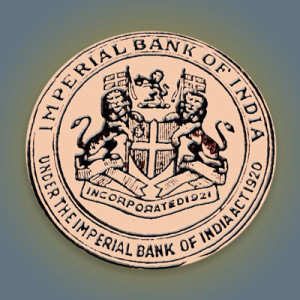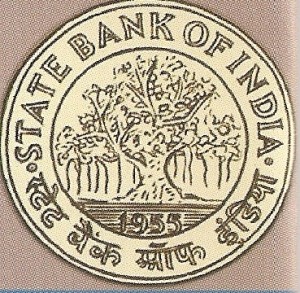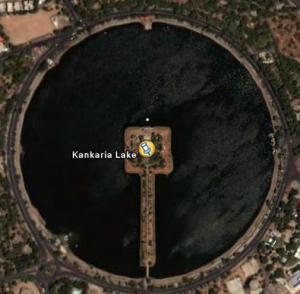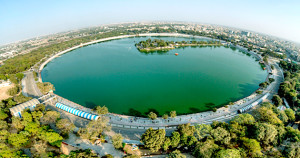13 Aug

India celebrates her independence. In 1947 India got freedom from British colonial ruling. 15th of August is the Independence Day of the largest democracy in the world; India.
Having about 1,00,000 years of history, India has given a lot to the humanity… owning above 5000 plus years old developed culture (Harappa, one of the most ancient civilization in the world), India did consecrated the humankind with numerous inventive contributions.. Name a few;
- Algebra, Trigonometry, Calculus
- Zero(0) as a number
- Games of Chess, Snake & Ladder
- Having set the worlds 1st university, established in Takshashila (or Takshila or Taxila; differently pronounced in different languages) in 700 BC with more than 10,000 students from all over the world and had a curriculum of more than 60 subjects
- Being the only producer of wootz steel, which was exported globally for the making of weaponry during the 5th century BC.
- Being the first source of diamonds in the world during 18th century
- 2500 years old, ancient medical science of ‘Ayurveda’
- ‘Yoga’, the ancient life-style that became the modern life-science of the world
… the contributions India had passed on to the humanity is long to list.
The Economy of India stands as 7th largest in the world in GDP (‘Gross Domestic Product’: Total value of goods and services produced by a country in a particular year) and 3rd largest in the world in PPP (‘Purchasing Power Parity’: The comparison of purchasing power of currencies in two different countries for the same good). And, India had overtaken China and became the fastest growing economy in the world during the last quarter of 2014.
In such a vibrant scenario for India, in the occasion of Indian Independence celebration, this post is our tribute to the long lasting civilized India. And, here we talk about a powerful brand from this country; State Bank of India.
The State Bank of India, often referred as SBI, is one of the most successful banks in India, which has a history spanning over a two hundred years.
The origin of State Bank of India clocks back to the year 1806 when the Bank of Calcutta was established. Three years ahead in 1809 January, the title of the bank was changed as Bank of Bengal.
Later, the Indian Parliament initiated the amalgamation of 3 banks namely Bank of Bengal, Bank of Bombay and Bank of Madras to create a single bank entity namely ‘Imperial Bank of India’ which came in effect on 27th January, 1921.
In 1955, the Parliament of India had constituted the State Bank of India Act, 1955 to commence the State Bank of India, which in turn shall take over the business of Imperial Bank of India. Thus, in effect, the Imperial Bank of India became the State Bank of India on 1st July 1955.
The first SBI logo came into existence in 1955. The logo had a Banyan Tree in a round coin form, with the words “State Bank of India” itched in English, the business language and Hindi, the national language of India. The year of establishment was printed just at the roots of the Banyan Tree. The bank was nationalized on 30th April 1956. The banyan tree in the logo meant the banks strong roots that spread wide and the broadening branches of the tree indicates growth, success and stability.
1971 – Till Date
There was a wise and valid reason behind the change of the Banyan tree logo of SBI. In the year 1971, a new logo was adopted. The banks logo has a very interesting story and a deep meaning behind it. Let’s learn more about SBIs present logo and the history behind it’s design.
It’s said that people of the brand thought that the banyan tree was not appropriate for the bank’s identity, on the very reason that no other plant grows within the space of a banyan tree. This point went against the banks core values. The new logo was designed by Shekhar Kamat, the creative head at the National Institute of Design(NID), Ahmedabad, Gujarat. It was during the inauguration of the SBI Central Office Building at Backbay Reclamation, Bombay on 1st October 1971, the iconic logo was unveiled.
The quest is, what was this new motif of SBI all about?
- Observing it closely, you will find a white circle with the vertical line appearing as a keyhole on the escutcheon-shaped blue round. The symbol of ‘keyhole’ indicates security, safety and strength of the bank.
- Beyond this, keyhole denotes a vision into future, with its progressive promises for growth in all spheres of life.
- It has a big blue circle, enclosing a small white circle in the centre with an attached vertical line below. This simple, yet effective logo had many meanings. The first and the most widely agreed meaning is that the big circle in blue reflects the unity and completeness while the small circle inside along with the vertical line represents common man as a vital part of the bank, despite the huge size of the bank.
- Another interpretation is that, the white circle in the centre is a bank branch and the narrow line stands for the tiny lanes and streets of a typical Indian town, city, or even village which reaches one to the SBI branch. Thus, through this simple yet admirable logo, the brand highlights that wherever one goes, SBI is there to serve.
- Above all, this keyhole has the solutions to all the financial needs of a common man.
Extravagant inspiration for the logo creation
Images of Kankaria Lake, Ahmedabad
<view from side aerial satellite view>
If you contemplate over the SBI logo, and compare it with the pictures above, you will be amused that the logo resembles the shape of the Kankaria Lake in Ahmedabad, Gujarat. In fact, SBI logo came from the National Institute of Design, Ahmedabad. And, apparently the artistic inspiration probably would have been the fascinating beauty of Kankaria Lake in Ahmedabad. However, the brand SBI has very close relations to Gujarat since many decades.
And, the iconic SBI logo has remained unchanged since 1971.
Associated banks & Non-banking subsidiaries
The State Bank of India has five Associate Banks namely; State Bank of Hyderabad, State Bank of Bikaner & Jaipur, State Bank of Patiala, State Bank of Travancore and State Bank of Mysore with controlling interest ranging above 75% upto 100%. These associated banks make a strong presence in the banking sector through a combined network of 6100+ branches in India.
Besides its five associated banks, SBI also has the non-banking subsidiaries namely; SBI Capital Market Ltd., SBI Life Insurance Company Ltd., SBI General Insurance Ltd., SBI DFHI Ltd., SBI Funds Management Pvt. Ltd., SBI Factors & Commercial Services Pvt. Ltd. and SBI Cards & Payments Services Pvt. Ltd.
Beyond the boarders
State Bank of India (SBI) is a Government of India owned multinational bank grouped under financial services and public sector banking services with its corporate headquarters in Mumbai, India. Having 18,000 branches in India and more than 180 offices abroad, it’s the largest banking firm from India. The countries SBI has presence through its branches include prominent countries viz., India, Australia, Bahrain, Oman, UAE, Qatar, Saudi Arabia, China, Hong Kong, Indonesia, Israel, Japan, Maldives, Singapore, Sri Lanka, Bangladesh, Nepal, France, Germany, Italy, Belgium, South Africa, UK, US and Bahamas.
With a noble management strategy, an eye on innovation, fine financial strengths and strong market presence, the State Bank of India stands as a paradigm brand in the banking stratum across the world.
All Intellectual Properties referred on this website are absolutely owned by their respective owners.
Recent Posts
Archives
Categories
- Airlines
- Apparel
- Automobile
- Aviation
- Banking
- Beverage
- Chocolate
- Clothing
- Coffee Shop
- Computer Hardware / Software
- Confectionery
- Consumer Packed Goods
- Digital Imaging
- Document Services
- Electronics
- Entertainment
- Fashion
- Fast Food
- Film Production
- Financial services
- FMCG
- Food & Beverage
- Games / Toys
- Healthcare
- Healthcare/ Hygiene
- Internet
- IT Consulting
- Lifestyle
- Logistics
- Luxury Goods
- Mass Media
- Oil and Gas
- Petroleum Industry
- Pharmaceutical
- Processed Food
- Readymade Garments
- Restaurant
- Retail
- Social
- Social Media
- Sports Goods
- Technology
- Telecommunication
- Watch Manufacturing
Recent Posts
- Who took the first and only bite of Apple? August 28, 2019
- Wikipedia: the world of words over the world wide web October 9, 2015
- Pepsi: pepping-up the spirits around October 2, 2015
- Shell: a pearl from the ocean of oil September 24, 2015
- Barbie: the big toy-story unwrapped September 17, 2015
SERVICE LIST
Trademark
Copyright
Industrial Design
Patent
Geographical Indication
MSME registration
©2020 Rah India Technologies Pvt. Ltd.
All Rights Reserved.
Intellectual Properties exemplified on this website are owned by their respective owners.




